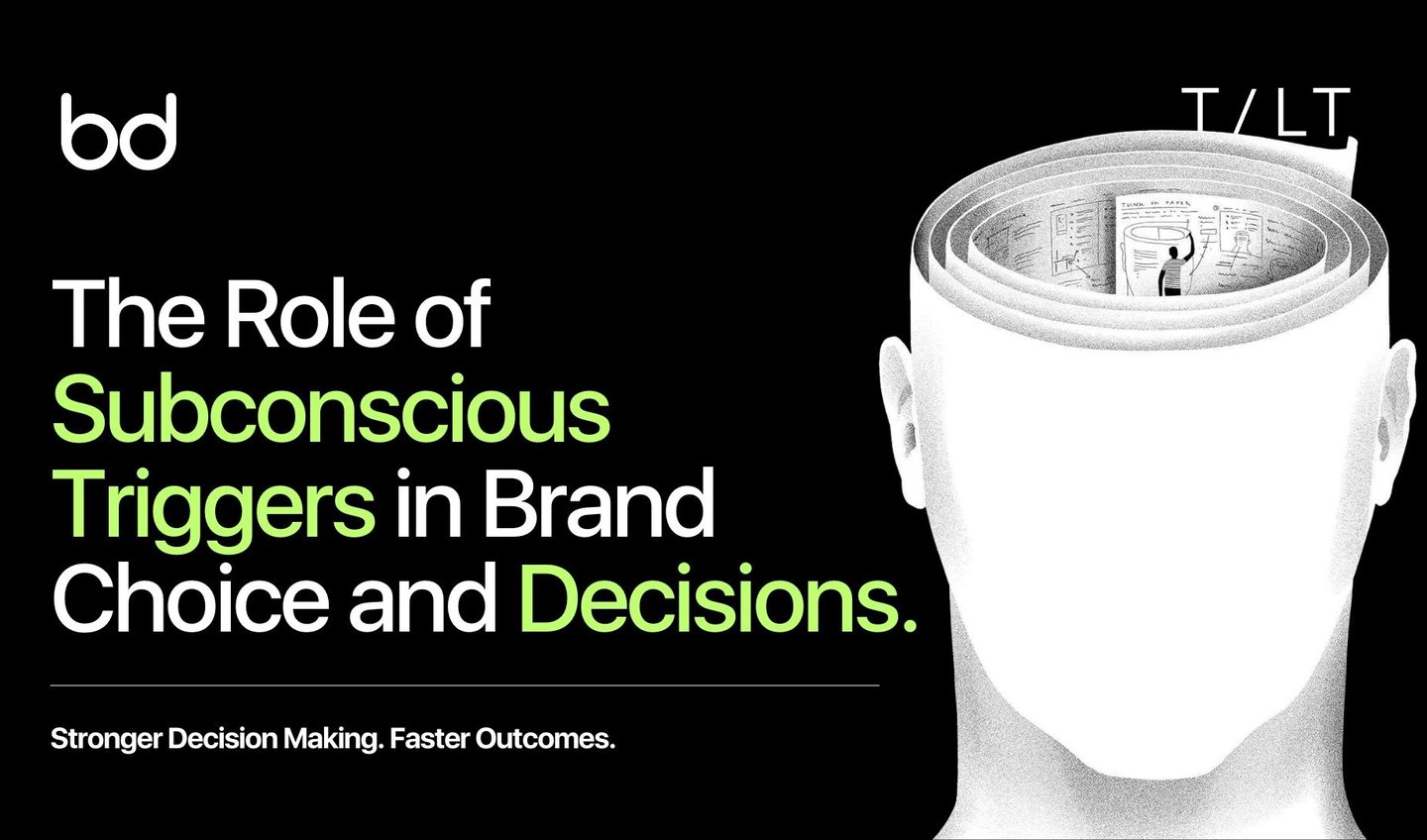The Role of Subconscious Triggers in Brand Choice and Decision-Making
Every day, billions of brand decisions are made, yet less than 5% of those are truly conscious. The rest are governed by a world beneath awareness: the subconscious. For marketers with big ambitions, this is the future of winning brand strategy.
Brand Blinks Global
3 min read


Why the Subconscious Runs the Show
Harvard’s research shows that up to 95% of our decisions are made subconsciously, driven by emotional urges that logic only justifies afterwards. These “under-the-radar” responses happen in milliseconds; subconscious thought is up to 200,000 times faster than conscious processing.
Brands that leverage subconscious cues create instant preferences, foster loyalty, and make their products the default choice, even when shoppers think they’re making rational decisions.
See how our Neuromarketing Solutions unlock the power of subconscious science in your campaigns.
Theories at Work: Why Our Brains Love Shortcuts
Several classic and modern theories explain subconscious brand influence:
Priming Effect: Exposure to subtle cues (colors, symbols, images) shapes later decisions without awareness. Show someone luxury imagery, and they’ll rate a brand as more prestigious even if they think they’re objective.
Mere Exposure Effect: Familiarity breeds liking. The more you see or hear a brand, the safer and better it feels even before you consciously “know” it.
Dual-Process Theory: Decisions flow through two paths: the fast, automatic subconscious (System 1), and the slow, deliberate conscious (System 2). Most brand choices are made by System 1: intuitive, emotional, effortless.
Neuromarketing: This field uses neuroscience tools (like fMRI and EEG) to map real brain responses to brands, ads, and packaging. It’s the cornerstone for modern subconscious-led strategy.
Read: A STUDY ON THE EFFECTIVENESS OF SUBCONSCIOUS CUES IN INFLUENCING CONSUMER CHOICES
What Triggers the Automatically Loyal Brain?
Let’s break down key subconscious triggers marketers use:
Color & Shape Psychology: Colors evoke immediate emotion. Red signals urgency; blue calms and builds trust. Rounded logos or smooth textures prime the brain for “friendliness,” while sharp shapes suggest power and innovation.
Pattern & Repetition: Jingles, rhythmic slogans, and visual motifs create implicit memories stored deep without effort. Think Intel’s chimes or Nike’s swoosh: recall is instant.
Social Proof: Seeing others choose a product or brand activates mirror neurons, triggering subconscious mimicry: “If they trust it, maybe I should too.”
Habits & Routines: Most consumer choices are habitual. We reach for our favorite toothpaste or coffee not by logic, but by emotional memory and habit. Brands that tap into routines become “default options ”hard to displace.
Sensory Cues: Scent, sound, and even tactile packaging create emotional anchors. The familiar smell of a bakery or the crisp snap of opening a can link pleasure directly to the brand.
Case Study: The Coca-Cola Effect
The Coca-Cola Company legendary “Share a Coke” campaign succeeded not because people researched price or ingredients, but because customization (“your name on a bottle”) primed recognition and belonging: two powerful subconscious forces. Its ‘Open Happiness’ campaign doesn’t just promise refreshment, it targets happiness, the ultimate emotional trigger.
Neuromarketing in Action: Real Tools and Impact
Modern neuromarketing uses brain scans and physiological sensors to track brand impact:
Eye-Tracking: Shows what grabs subconscious attention, revealing the “real” consideration set.
EEG/fMRI: Maps emotional and memory centers activated by logos, ads, colors, and storytelling.
Behavioral Analysis: Tests “default” reactions, habits, and preference shifts without conscious effort.
Brands that utilize this data experience higher recall, increased loyalty, and improved campaign ROI.
How to Leverage Subconscious Triggers
Here’s how you can use this science today:
Map subconscious triggers for your audience: color, shape, sound, or story.
Use repetition and consistent motifs for implicit learning.
Make emotional benefits clear: don’t just say “fast,” evoke urgency, relief, or delight.
Build habit loops, reward routines, and foster automatic preference.
Create sensory anchor points: scents, sounds, textures linked with your brand.
Leverage social proof: testimonials, influencer advocacy, and visible popularity.
Test and optimize with neuromarketing tools: track not just what people say, but what their brains actually do.
Why Subconscious Branding Is Ethical (When Done Right)
Ethics matter: subconscious influence shouldn’t be about manipulation, but resonance. The best brands align their triggers with genuine benefits, relieving pain points, sparking joy, or empowering communities. When subconscious cues reinforce real brand values, loyalty becomes truly authentic.
AI and Subconscious Triggers
AI can now analyze vast data pools to predict subconscious preferences in real time. From dynamic personalization to automated sensory optimization, the next era of branding will blend neuroscience, psychology, and machine learning, making subconscious influence smarter than ever.
Ready to Transform Your Brand?
Tags
Subconscious branding, Neuromarketing, Priming Effect, Dual-Process Theory, Mere Exposure, Sensory Branding, Emotional Triggers, Behavioral Insights, Brand Loyalty, Implicit Memory, Automaticity, Consumer Psychology, Brand Habits, Neuroscience Marketing







© 2025 BRNDXMORPH Media Worldwide Private Limited. All rights reserved
Brand Blinks Global is an independent global brand intelligence x transformation company.
The trademarks, logos, and service marks displayed on this site are the property of their respective owners.
"Brand Blinks Global," "Brand Blinks," "Made for the Uncommon," and the "bd" logo are trademarks or registered trademarks of BRNDXMORPH Media Worldwide Private Limited.
RESOURCES
INTELLIGENCE
BUSINESS
TALENT
COVERAGE
EXPLORE
Made for the Uncommon


When your brand grows, others rise too. 2% of your project empowers a nonprofit we back together every year.


